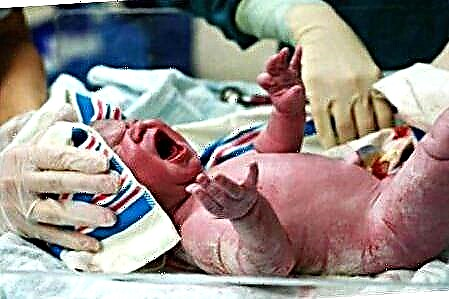In the prenatal period, the fetus has a gradual formation of organs and systems. There are elements that are required for him during intrauterine development and they dissolve by the time of birth. Under the influence of some factors, these formations do not disappear at the right time and sometimes form a defective state. A Meckel diverticulum may appear in the digestive tract. What it is? Is it possible to identify it yourself? Why is this disorder dangerous?
Meckel's diverticulum Is a small bulge in the intestinal wall, near the junction of the small intestine and large intestine. This "pocket" is the remnant of tissue from the prenatal development of the digestive system. The type of tissue this sac is composed of is different from that of the small intestine. A similar material structure is found in the stomach and pancreas.
In 1809, Johann Friedrich Meckel published an article on the diverticular residue of the yolk (umbilical) duct (the canal that connects the yolk sac to the intestinal cavity of the fetus) located in the ileum. The document was quite detailed and included a description of the anatomy and embryonic origins. The pathology got its name from the name of the doctor, although in 1598 the disorder was first described as an unusual diverticulum of the small intestine by Fabricius Hildanus.
The mechanism of development of pathology

The yolk sac (the embryonic organ with a supply of nutrients for the embryo) is the first element to be formed in the ovum (the structure surrounding the embryo). The yolk sac is involved in the transfer of maternal nutrients to the fetus at an early stage of pregnancy during the critical period of organogenesis (the final stage of the individual development of the embryo).
Pathogenesis of diverticulum formation
At the beginning of an embryo's life, its middle section of the intestine (from which parts of the small and large intestine subsequently develop) receives its nutrition from the yolk sac through the umbilical-intestinal duct. The canal then gradually narrows and usually disappears after 7 weeks of pregnancy. If the canal does not completely dissolve, various types of vitelline duct anomalies appear, one of which is Meckel's diverticulum.
The mucous membrane is most often gastric. This is important because peptic ulceration of this or adjacent mucosa can lead to painless bleeding, perforation, or both. One study found:
- in 62% of cases, the diverticulum contained the gastric mucosa;
- pancreatic tissue was found in 6% of patients;
- pancreatic tissue and gastric mucosa in 5% of cases;
- in 2% of patients, the mucous membrane of the jejunum;
- mucous membranes of the stomach and duodenum were found in 2% of cases;
- colon tissues are rarely noted.

Symptoms
Symptoms of a Meckel diverticulum usually appear in the 1st or 2nd year of life (average 2.5 years), but the initial symptoms may occur in the 1st decade. Meckel's diverticulum is most often diagnosed during an examination associated with other conditions of the abdominal organs.
Complications as a marker for the presence of a diverticulum
The onset of symptoms of pathology is actually associated with the development of complications. It is estimated that this occurs in 4-16% of patients. Complications are the result of obstruction, ectopia (displacement) of tissue, or inflammation. In one study of 830 patients of all ages, complications included:
- intestinal obstruction (35%);
- hemorrhage (32%);
- diverticulitis (22%);
- umbilical fistula (10%);
- other umbilical injuries (1%).
Complications of Meckel's diverticulum can develop at any age. However, the risk decreases with age. It is the highest in children.
In one study of 65 children in 10 cases with obstruction, isolated gangrene of Meckel's diverticulum was found.
In children, hematochezia (bright red blood in the stool) is the most common indicative sign.

Acute gastrointestinal bleeding
Acute bleeding from the lower gastrointestinal tract is secondary to ulcer hemorrhage. Such ulceration occurs when acid secreted in the diverticulum of the gastric mucosa damages adjacent, vulnerable tissue. Clinically, hemorrhage is usually noted as substantial painless rectal bleeding. However, some patients may experience pain prior to the onset of hematochezia. The pain can be quite significant.
The stool is usually the color of red currant jelly. Bleeding can cause significant anemia, but is usually self-limiting due to tendon contraction as patients have reduced blood volume.
Meckel's diverticulum is sometimes inflamed, the condition manifests itself similarly to acute appendicitis. The inflammation can lead to perforation and peritonitis.
Meckel's diverticulum in children is often associated with other congenital abnormalities, including atresia (closure) of the esophagus and anus, omphalocele (a form of umbilical hernia), Crohn's disease, and various neurological and cardiovascular malformations.
Diagnostics of the Meckel diverticulum in children

The diagnosis of symptomatic or complicated Meckel diverticulum is difficult to confirm based on history, physical examination, and laboratory tests. It is always considered a differential diagnosis for bowel obstruction and hemorrhage. A painless, profuse hematochezia in a child should be a signal to the doctor about the possibility of such a diagnosis and should prompt further research.
Laboratory research
Routine laboratory findings, including CBC, electrolyte, glucose, urea, creatinine, and coagulogram results, do not help diagnose Meckel's diverticulum, but are necessary to monitor a patient with gastrointestinal bleeding.
Hemoglobin and hematocrit levels are low with significant bleeding.
Constant bleeding from a Meckel diverticulum can cause iron deficiency anemia. However, megaloblastic anemia is also seen due to vitamin B12 or folate deficiency. Low levels of albumin and ferritin can be misdiagnosed as inflammatory bowel disease.
Visual research methods
Taking anamnesis and physical examination are of paramount importance for establishing a clinical diagnosis. Imaging studies are performed to confirm the clinical suspicion of a Meckel diverticulum.
Regular abdominal x-ray has limited value. It can show signs of complications other than bleeding.
When a patient has gastrointestinal bleeding suggestive of a Meckel diverticulum, diagnostic evaluation should focus on the method radioisotope scintigraphy with technetium ("Meckel scanning"). A radioactive substance called technetium, which is preferably absorbed into the stomach tissue, is injected into the bloodstream by intravenous vein. This substance can be seen on x-rays and indicates areas where acid-resistant stomach tissue exists, including the Meckel diverticulum.
Barium X-ray have largely been replaced by other imaging techniques; however, if a barium test is ordered, it should never precede a “Meckel scan”. This procedure is done to examine the colon to help rule out other possible causes of gastrointestinal bleeding. A small liquid called barium, which coats the inside of the colon so that it appears on X-rays, is injected into the rectum using an enema. The images show narrowed areas, obstructions, and other problems.

Treatment
Children with Meckel diverticulum in the absence of manifestations do not need treatment. Those who have symptoms due to the condition will have surgical intervention... Surgery usually involves removing the diverticulum and repairing the bowel.
Children with severe blood loss should take iron supplements, and blood transfusions may be needed to replace the lost blood.
Meckel diverticulum correction surgery usually has a low risk of complications. However, there may be some consequences after the intervention. In particular, scar tissue may develop, leading to intestinal blockage. A blockage in your intestines is life-threatening and requires additional surgery to correct it.
Conclusion
The prognosis for treatment is favorable. Surgical elimination of the diverticulum usually normalizes bowel function, and blood loss stops. Children who have surgery usually recover completely.



